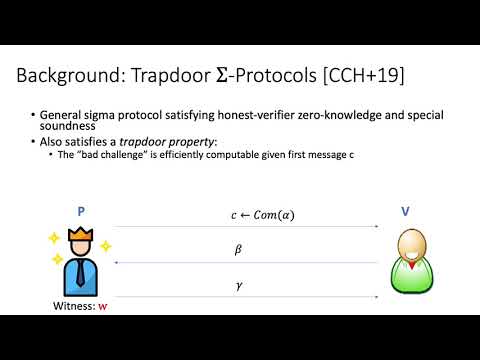Welcome to the resource topic for 2021/942
Title:
Compact Ring Signatures from Learning With Errors
Authors: Rohit Chatterjee, Sanjam Garg, Mohammad Hajiabadi, Dakshita Khurana, Xiao Liang, Giulio Malavolta, Omkant Pandey, Sina Shiehian
Abstract:Ring signatures allow a user to sign a message on behalf of a ``ring’’ of signers, while hiding the true identity of the signer. As the degree of anonymity guaranteed by a ring signature is directly proportional to the size of the ring, an important goal in cryptography is to study constructions that minimize the size of the signature as a function of the number of ring members. In this work, we present the first compact ring signature scheme (i.e., where the size of the signature grows logarithmically with the size of the ring) from the (plain) learning with errors (LWE) problem. The construction is in the standard model and it does not rely on a common random string or on the random oracle heuristic. In contrast with the prior work of Backes et al. [EUROCRYPT’2019], our scheme does not rely on bilinear pairings, which allows us to show that the scheme is post-quantum secure assuming the quantum hardness of LWE. At the heart of our scheme is a new construction of compact and statistically witness indistinguishable ZAP arguments for NP \cap coNP, that we show to be sound based on the plain LWE assumption. Prior to our work, statistical ZAPs (for all of NP) were known to exist only assuming sub-exponential LWE. We believe that this scheme might find further applications in the future.
ePrint: https://eprint.iacr.org/2021/942
Talk: https://www.youtube.com/watch?v=FgMO7Gph_QE
Slides: https://iacr.org/submit/files/slides/2021/crypto/crypto2021/376/slides.pptx
See all topics related to this paper.
Feel free to post resources that are related to this paper below.
Example resources include: implementations, explanation materials, talks, slides, links to previous discussions on other websites.
For more information, see the rules for Resource Topics .
